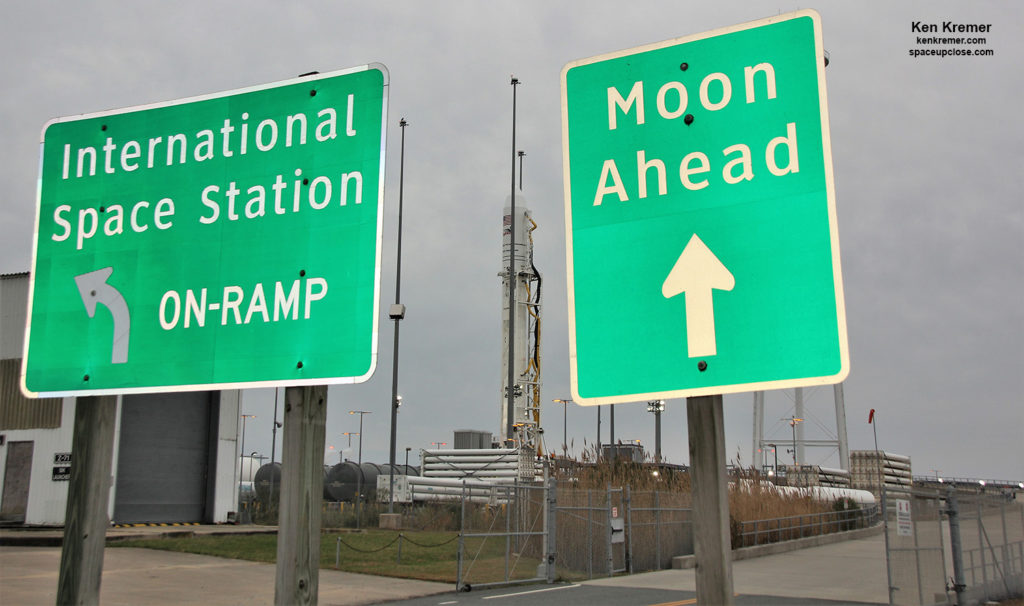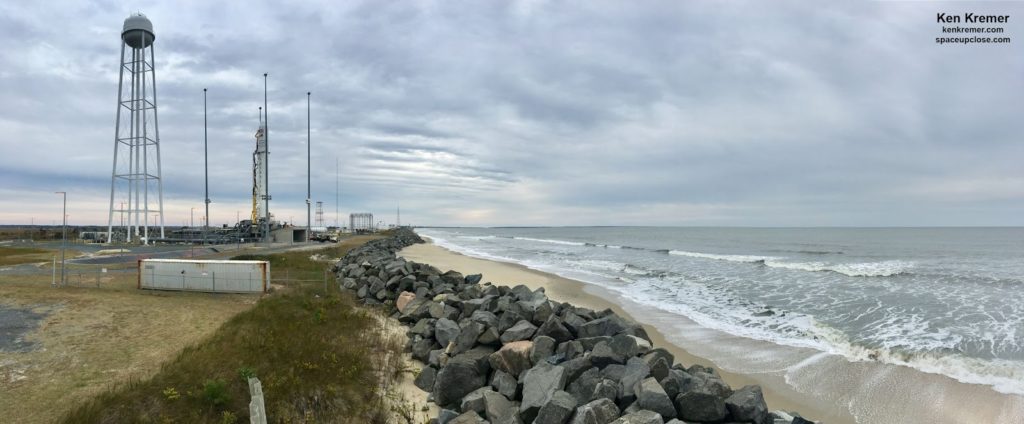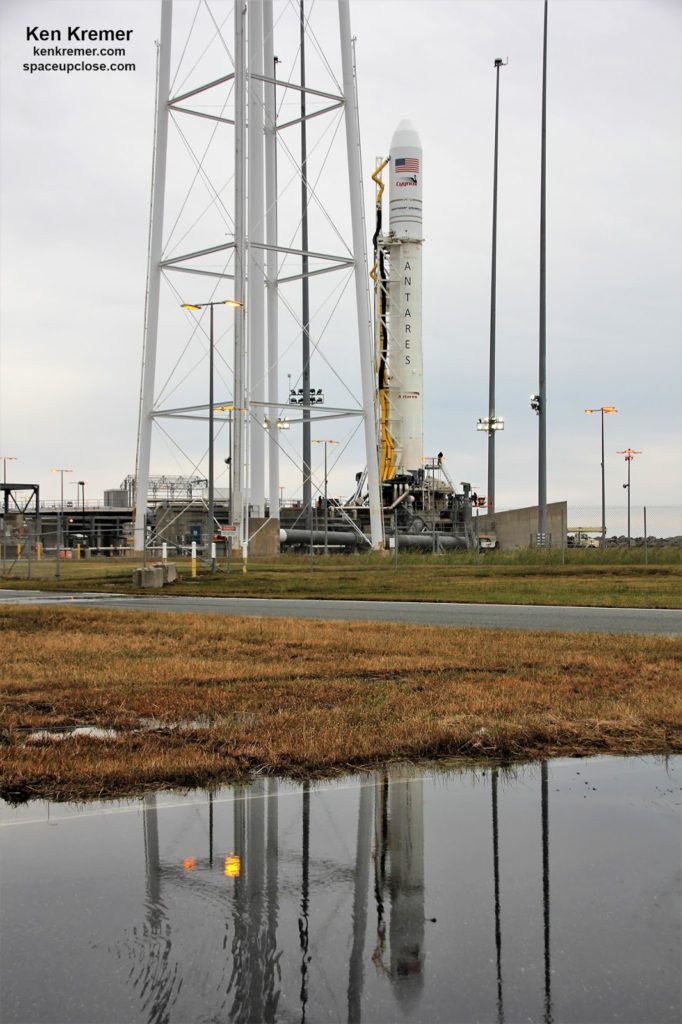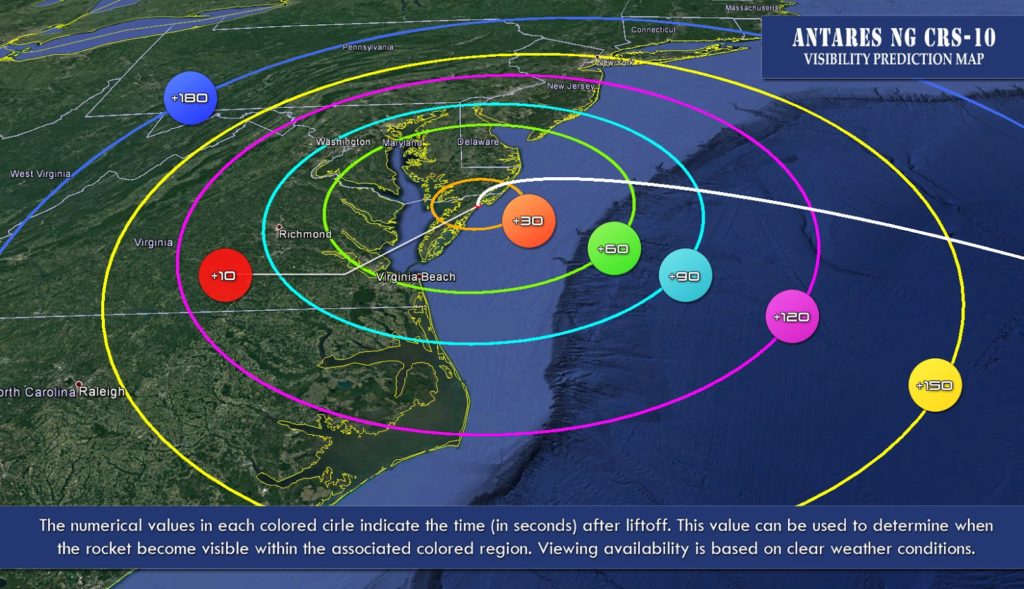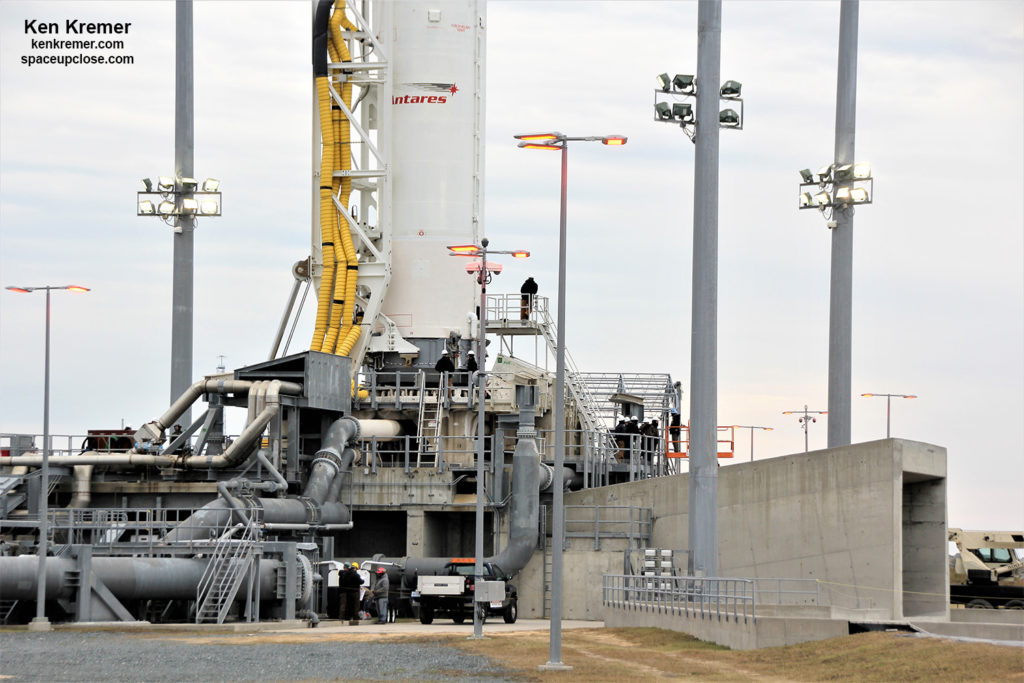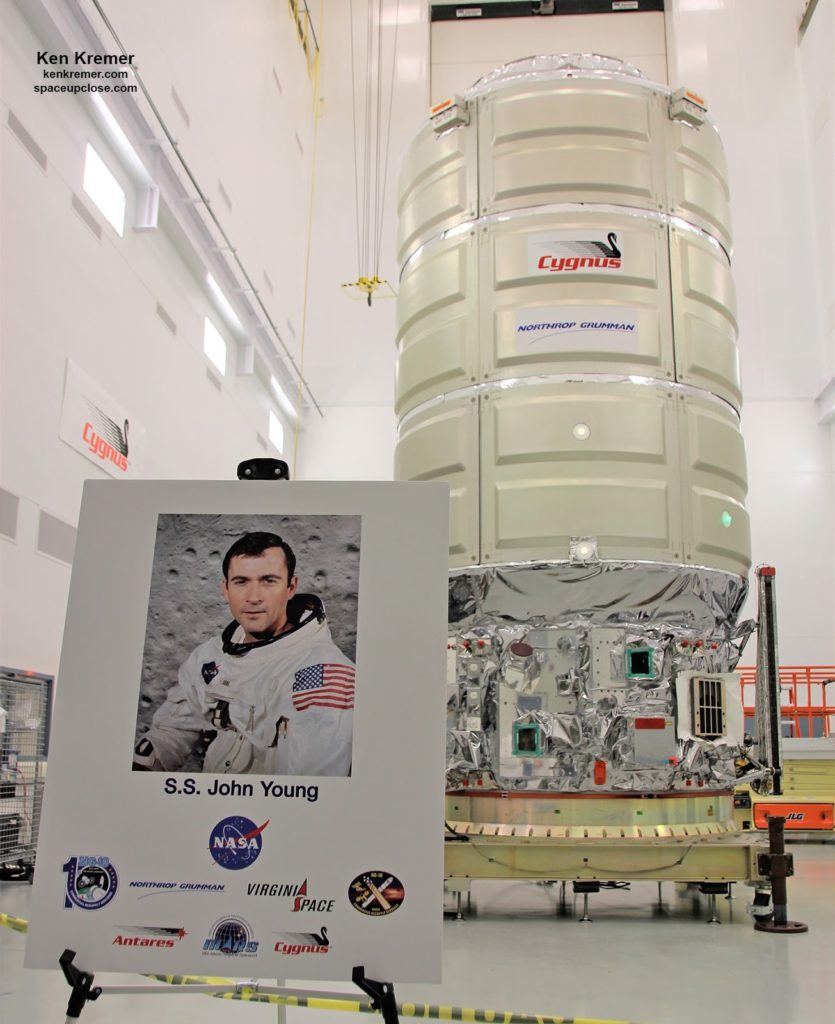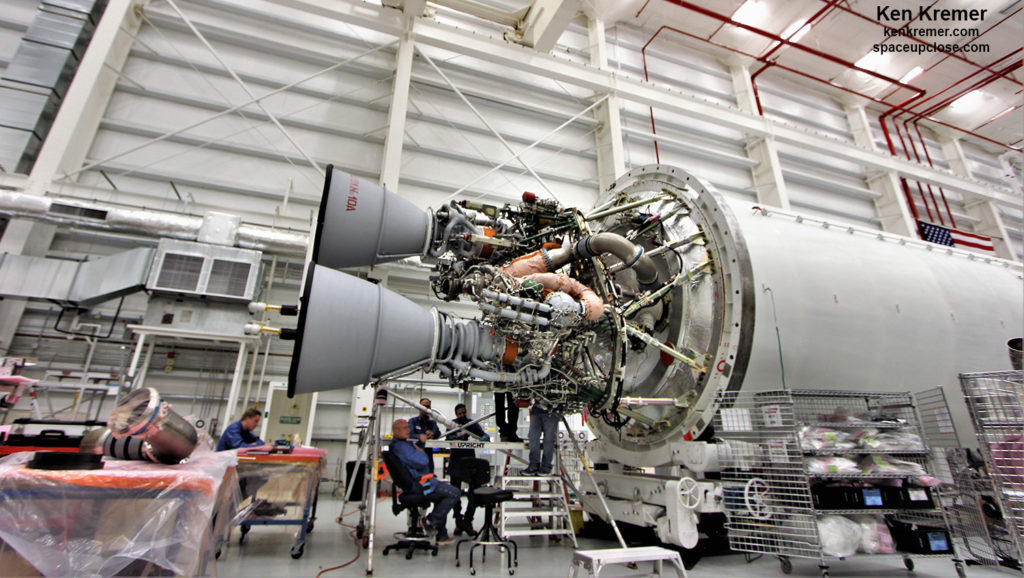November 2018
NASA
WALLOPS FLIGHT FACILITY, VA – After a two day delay due to drenching rainstormsand heavy winds inundating NASA’s launch base on Virginia’s Eastern Shore, a Northrop Grumman Antares
commercial rocket is now scheduled to
launch in a few hours during a middle-of-the-night blastoff Saturday, November
17 on a cargo resupply mission bound for the International Space Station (ISS) carrying
nearly 4 tons of science and supplies for the multinational crew –
including the 1st ever ‘recycling refabricator’.
Liftoff
of Northrop Grumman’s upgraded Antares 230 configuration
rocket is scheduled for 4:01 a.m.
EST on Saturday, Nov. 17, 2018 from seaside pad 0A at NASA’s
Wallops Flight Facility at the Mid Atlantic Regional Spaceport in Virginia.
That’s roughly 2 hours
before sunrise and should make for an absolutely stunning sight along the
Eastern seaboard – home to America’s most densely populated region.
And superb weather
conditions are forecast Saturday, Nov. 15 of greater than 95% favorable
conditions in complete contrast to the initial targeted launch dates of Thursday,
Nov. 15 and Friday, Nov. 16 of over 90% unfavorable conditions at launch time.
“Today’s Wallops range forecast predicts excellent conditions
for launch [Nov 17], with less than a 5 percent chance of a weather-related
concern,” NASA reported today.
“The storm system that produced high winds and heavy rain on
Thursday is currently exiting the region and moving off quickly to the
northeast. Windy conditions will continue through the morning hours before
beginning to subside this afternoon as the area of low pressure moves farther
away and high pressure builds closer to the Wallops area.”
the agency’s website.
The launch window opens at 4:01 a.m. EST and
extends for 5 minutes total until 4:06 a.m. EST.
Launch coverage and commentary on NASA TV and streaming online at nasa.gov/live will begin
at 3:30 a.m. EST Nov. 17.
“When accessed from a smartphone browser, the Wallops
Mission Status Center website can
provide specific viewing information based on your location. Live coverage of
the mission is scheduled to begin at 9:30 p.m. EST Nov. 16 on the Wallops
video and audio Ustream sites.”
Backup launch opportunities
exist on Sunday and Monday in case of a delay for any reason including
technical and weather issues.
If Antares launches on
Saturday, Cygnus starts a two day chase to arrive at the station on Monday,
Nov. 19 for robotic arm capture and berthing at the Earth-facing port on Unity
orbiting some 250 miles (400 km) above Earth.
comprising science experiments, research gear,
food, water, spare parts, crew supplies and vehicle hardware to support the Expedition 57 and 58 crews and over 250 new and ongoing research
investigations.
The
rocket is ready to launch when the weather cooperates.
“The
combined systems test of the rocket, payload, and range was completed,” said Kurt
Eberly, Antares program manager VP at Northrop Grumman.
The countdown
starts at T Minus 6 hours 15 minutes before liftoff. Fueling begins at T Minus 1.6 hours.
Whenever Cygnus does fly this will be NASA’s 5
cargo resupply mission of 2018 and 1more is also planned by SpaceX on NET Dec.
4, said Montelbano.
approximately 3 months.
The Cygnus NG-10 cargo freighter, built by Northrop Grumman
Corporation, was christened the ‘S.S. John Young’ – in memory of John Young who
was NASA’s longest serving astronaut and passed away earlier this year in
January at age 87.
The S.S. John Young cargo resupply freighter is jam packed and will
deliver nearly 4 tons of research experiments and station hardware and crew
supplies to the trio of astronauts and cosmonauts living aboard the orbiting
science outpost after blastoff atop the 2 stage Antares 230 version rocket.
NG-10 counts as Northrop Grumman’s 10th station
resupply cargo mission for NASA.
Here’s a breakdown of the manifest aboard
Cygnus NG-10 which includes:
Crew Supplies: 2,515.5
lbs. / 1,141 kg
lbs. / 3,273 kg
lbs. / 77 kg
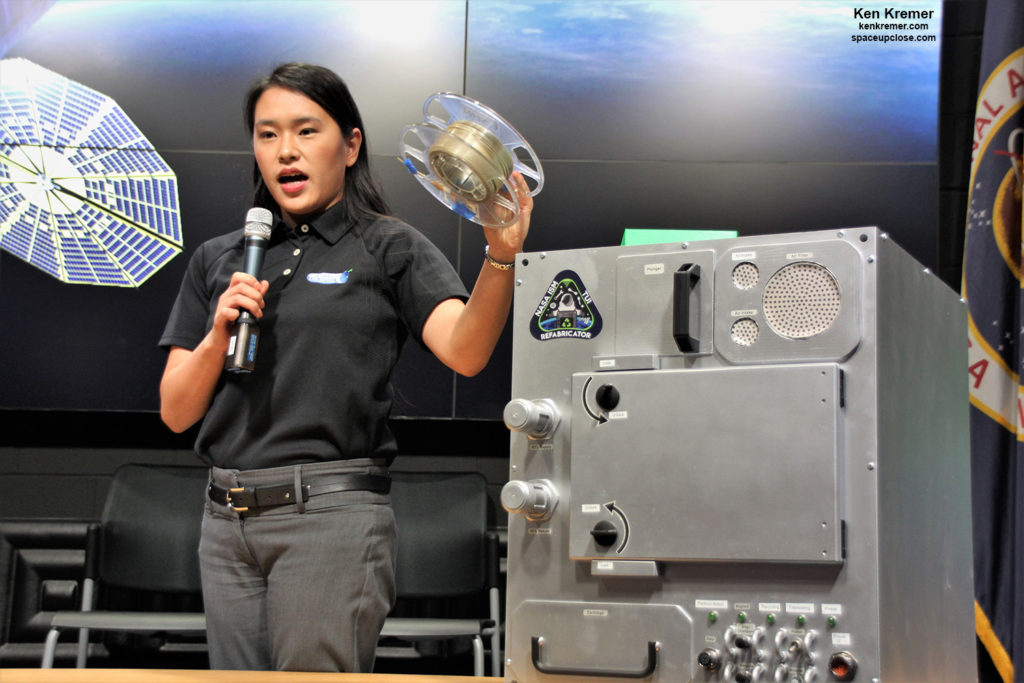 |
|
Dr. Allison Porter,
flight missions manager at Tethers Unlimited Inc., with a mock-up of the Refabricator, a combination 3D printer and recycler, headed to the International Space Station aboard NG-10. In Porter’s hand is a roll of 3D printer filament shown during the Nov. 13, 2018 science briefing at NASA Wallops. Credit: Ken Kremer/kenkremer.com/SpaceUpClose.com |
Among the research items on board will be the first integrated 3D printer and
recycler and refabricator to aid NASA’s Deep Space
exploration efforts.
“It will turn waste plastic materials aboard the station
into high-quality 3D-printer filament to create tools and materials, a key
capability for future long-duration space missions beyond low-Earth orbit,”
according to NASA.
Watch this NASA video highlighting some of the
science including the ‘refabricator’.
multifunctional cell culture platform or “lab-on-a-chip” are just
some of the science investigations heading to the International Space Station.
They’re on board Northrop Grumman’s Cygnus resupply flight 10 (CRS-10),
launching in mid-November on the Antares rocket from NASA’s Wallops Flight
Facility. More: https://go.nasa.gov/2SVf82d. Credit: NASA
Cygnus will deliver
vital equipment, supplies and scientific equipment to the space station as part
of Northrop Grumman’s Commercial Resupply Services-1 (CRS-1) contract with NASA
– totaling 11 cargo flights.
“NG-10 is the next to
last followed by NG-11 next spring under the CRS-1 contract,” said Northrop Grummans Kurt Eberly.
“Northrop Grumman also
has been awarded the follow-on CRS-2 contract from NASA comprising at least 6
more cargo missions.”
To date, Cygnus
spacecraft have delivered more than 23,000 kilograms of cargo to the
International Space Station, and removed 17,000 kilograms of disposable
cargo.
The
prior Cygnus cargo freighter was successfully launched by an Antares 230
vehicle from Wallops on May 21, 2018 on the Orbital ATK OA-9 resupply mission
for NASA before the company merged with Northrop Grumman.
Watch for Ken’s
continuing onsite coverage of NASA, SpaceX, ULA, Boeing, Lockheed Martin,
Orbital ATK and more space and mission reports direct from the Kennedy Space Center,
Cape Canaveral Air Force Station, Florida and Wallops Flight Facility,
Virginia.
Stay tuned here for Ken’s continuing Earth and Planetary science
and human spaceflight news: www.kenkremer.com –www.spaceupclose.com –
twitter @ken_kremer – email: ken at kenkremer.com
Dr. Kremer is a research
scientist and journalist based in the KSC area
.………….
Ken’s photos are for sale and he is available for lectures and outreach events


